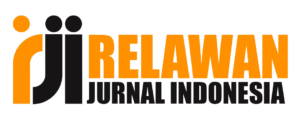Implementation of the Multi Attribute Utility Theory (MAUT) Method for Selecting the Best Affiliate Marketing
DOI:
https://doi.org/10.30812/bite.v6i1.4088Keywords:
Affiliate Marketing, Business Affiliate, Decision Support System, Multi Attribute Utility TheoryAbstract
Background: Digital marketing has become crucial for companies to remain relevant and grow. One common marketing strategy used is through collaboration with affiliate marketing. However, many companies still need help selecting the best affiliate marketing, often relying on subjective approaches.
Objective: This research aims to develop a Decision Support System (DSS) using the MAUT method to choose the best affiliate marketing in the digital marketing industry.
Method: This research method involves applying the MAUT method to identify normalization value variations among affiliate marketing options, resulting in a ranking of affiliate marketers.
Result: The results of this research show that Sugiharto, Rifan Jauhari, and Nina Dwi Lestari rank the highest, with respective preference values of 0.8750 and 0.8625.
Conclusion: The developed DSS successfully manages affiliate marketing data, providing valuable information for decision-making processes. This study contributes significantly to data management and marketing and has potential applications in various business contexts.
References
[2] M. Y. Balaka, J. W. Kuswinardi, I. I. D. A. Y. Wilyadewi, B. Efendi, and R. Zulfikar, “Aplikasi Mobile dalam Pemasaran Digital: Analisis Literatur tentang Pengaruhnya terhadap Keuangan dan Strategi Pemasaran Bisnis,” J. Pendidik. Tambusai, vol. 7, no. 3, pp. 21979–21988, 2023.
[3] P. N. Sari, “Pelatihan Digital Marketing Berbasis Potensi Lokal Daerah Pada Anggota Karang Taruna Desa Wangen Kabupaten Klaten,” SELAPARANG J. Pengabdi. Masy. Berkemajuan, vol. 7, no. 3, p. 1940, 2023, doi: 10.31764/jpmb.v7i3.17238.
[4] F. Rahman, “Praktik Affiliate Marketing pada Platform E-commerce dalam Tinjauan Hukum Ekonomi Syariah,” Istidlal J. Ekon. dan Huk. Islam, vol. 6, no. 1, pp. 24–37, 2022, doi: 10.35316/istidlal.v6i1.407.
[5] I. H. Budiman & Albar, “Sistem Pendukung Keputusan Penilaian Mahasiswa Berprestasi Berbasis Web (Studi Kasus AMIK HASS Bandung),” J. Ilm. CYBER HASS Inform. dan Komput., vol. 2, no. 2, 2019, [Online]. Available: http://amikhass.ac.id/medias/materi/combinepdf-min-compressed.pdf
[6] M. W. Arshad, “Combination of Rank Sum and Multi Attribute Utility Theory in Determining the Best Receptionist Performance,” vol. 4, no. 5, pp. 2549–2558, 2024, doi: 10.30865/klik.v4i5.1791.
[7] D. N. Sholihaningtias, “Penerapan Kombinasi Metode MAUT dan ROC Dalam Seleksi Karyawan,” Techno.Com, vol. 22, no. 1, pp. 145–155, 2023, doi: 10.33633/tc.v22i1.7480.
[8] V. P. Sabandar and R. Ahmad, “Sistem Pendukung Keputusan Penentuan Produk Terbaik Menggunakan Weighted Product Method,” J. Ilm. Comput. Sci., vol. 1, no. 2, pp. 58–68, 2023, doi: 10.58602/jics.v1i2.7.
[9] A. P. R. Pinem, H. Indriyawati, and B. A. Pramono, “Sistem Pendukung Keputusan Penentuan Lokasi Industri Berbasis Spasial Menggunakan Metode MOORA,” JATISI (Jurnal Tek. Inform. dan Sist. Informasi), vol. 7, no. 3, pp. 639–646, 2020, doi: 10.35957/jatisi.v7i3.231.
[10] A. F. O. Pasaribu and N. Nuroji, “Sistem Pendukung Keputusan Penentuan Pelanggan Terbaik Menggunakan Profile Matching,” J. Data Sci. Inf. Syst., vol. 1, no. 1, pp. 24–31, 2023, doi: 10.58602/dimis.v1i1.16.
[11] Arjun Nainggolan, Annisa Siregar, and M. Mesran, “Sistem Pendukung Keputusan Penilaian Indeks Kinerja Sales Marketing Menerapkan Metode MOORA,” Hello World J. Ilmu Komput., vol. 1, no. 3, pp. 121–129, 2022, doi: 10.56211/helloworld.v1i3.125.
[12] A. Q. D. Nanda, “Decision Support System in the Selection of Used Motorcycles with the Multi Attribute Utility Theory (MAUT) Method,” J. Comput. Scine Inf. Technol., vol. 9, no. x, pp. 154–159, 2023, doi: 10.35134/jcsitech.v9i3.80.
[13] Woro Agus Nurtiyanto, Perani Rosyani, Ines Heidiani Ikasar, Muhammad Syam Noverick, Galuh Surya Permana, and Bagus Wicaksono, “Decision Support System for Performance Assessment of Honoray Personnel Applying MABAC, MOORA, and ARAS Method with a Combination of ROC Weighthing,” Int. J. Integr. Sci., vol. 2, no. 12, pp. 2067–2086, 2023, doi: 10.55927/ijis.v2i12.7378.
[14] M. R. Aprillya and U. Chasanah, “Analisis Lahan Pertanian Rawan Banjir Menggunakan Metode Multi Atribut Utility Theory Berbasis Sistem Informasi Geografis,” Inform. Mulawarman J. Ilm. Ilmu Komput., vol. 16, no. 2, p. 148, 2021, doi: 10.30872/jim.v16i2.6554.
[15] C. Satria and A. Anggrawan, “Aplikasi K-Means berbasis Web untuk Klasifikasi Kelas Unggulan,” MATRIK J. Manajemen, Tek. Inform. dan Rekayasa Komput., vol. 21, no. 1, pp. 111–124, 2021, doi: 10.30812/matrik.v21i1.1473.
[16] E. T. Sihotang and H. Yutanto, “Tata Kelola Organisasi Mahasiswa Melalui Pengembangan Sistem Informasi,” MATRIK J. Manajemen, Tek. Inform. dan Rekayasa Komput., vol. 21, no. 1, pp. 99–110, 2021, doi: 10.30812/matrik.v21i1.1391.
[17] L. G. Rady Putra and A. Anggrawan, “Pengelompokan Penerima Bantuan Sosial Masyarakat dengan Metode K-Means,” MATRIK J. Manajemen, Tek. Inform. dan Rekayasa Komput., vol. 21, no. 1, pp. 205–214, 2021, doi: 10.30812/matrik.v21i1.1554.
[18] N. G. A. Dasriani and A. Anggrawan, “Pengembangan Sistem Aplikasi Cerdas Memprediksi Penjualan Mebel Berbasis website,” MATRIK J. Manajemen, Tek. Inform. dan Rekayasa Komput., vol. 21, no. 1, pp. 53–62, 2021, doi: 10.30812/matrik.v21i1.1276.














